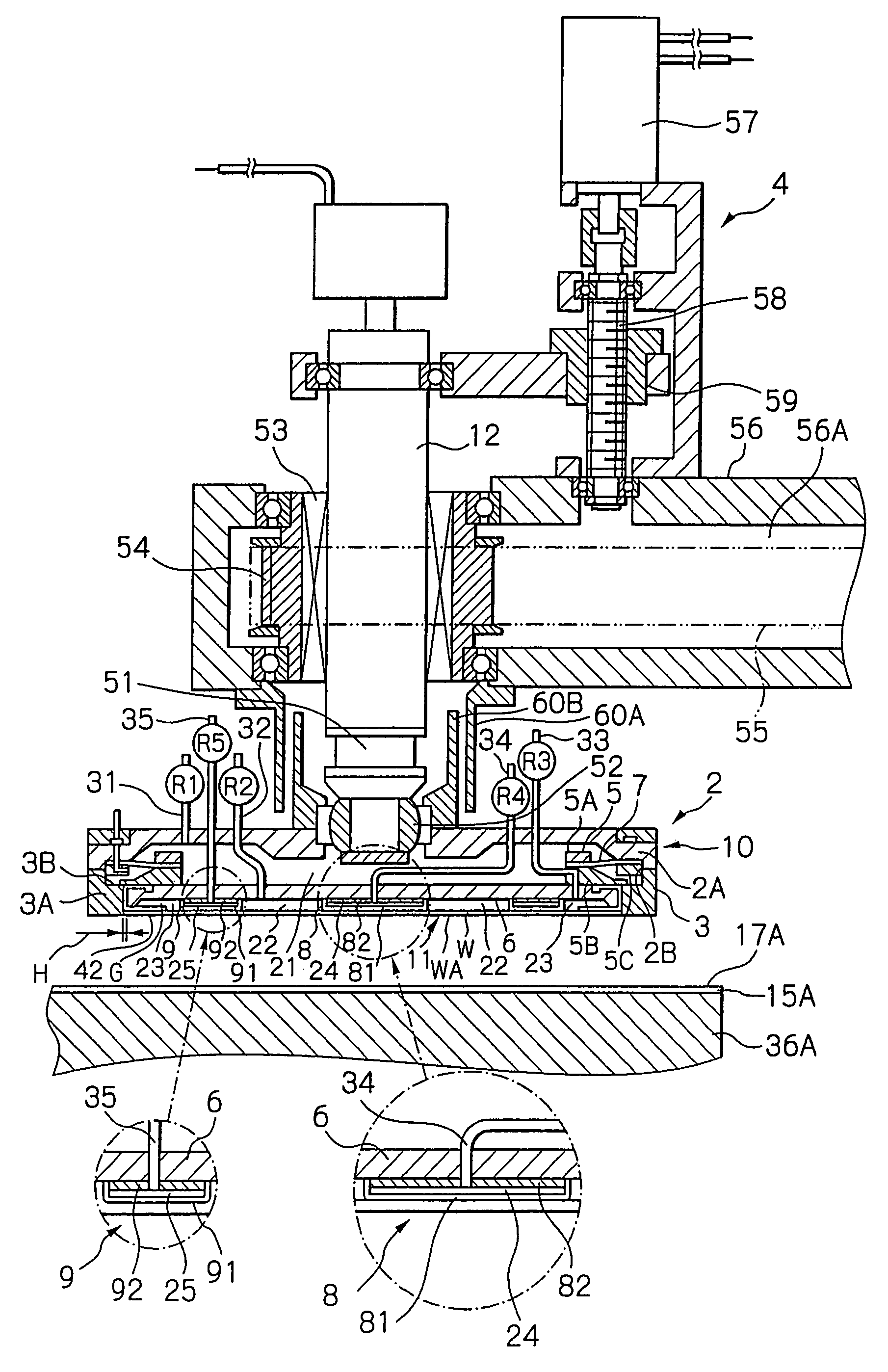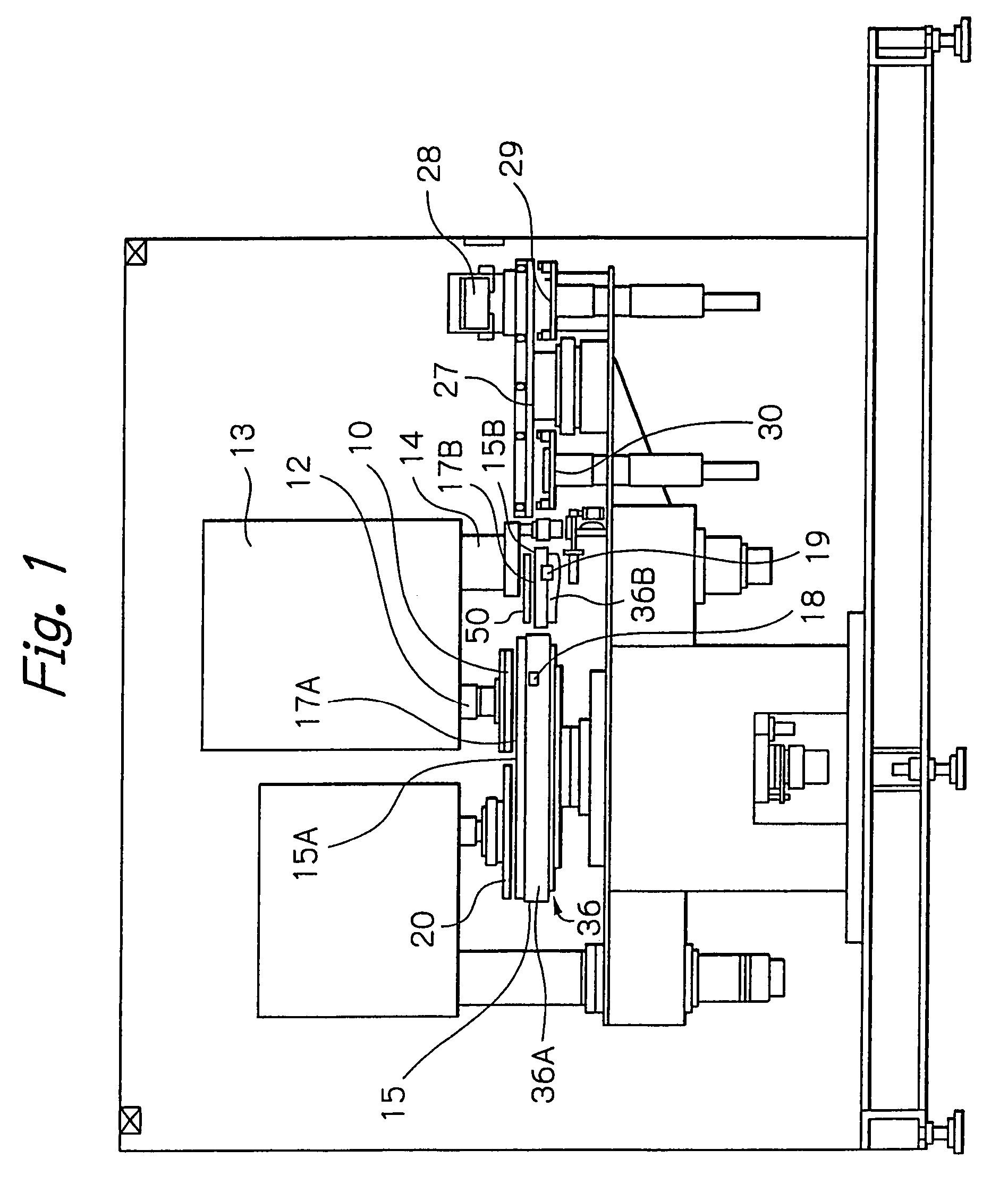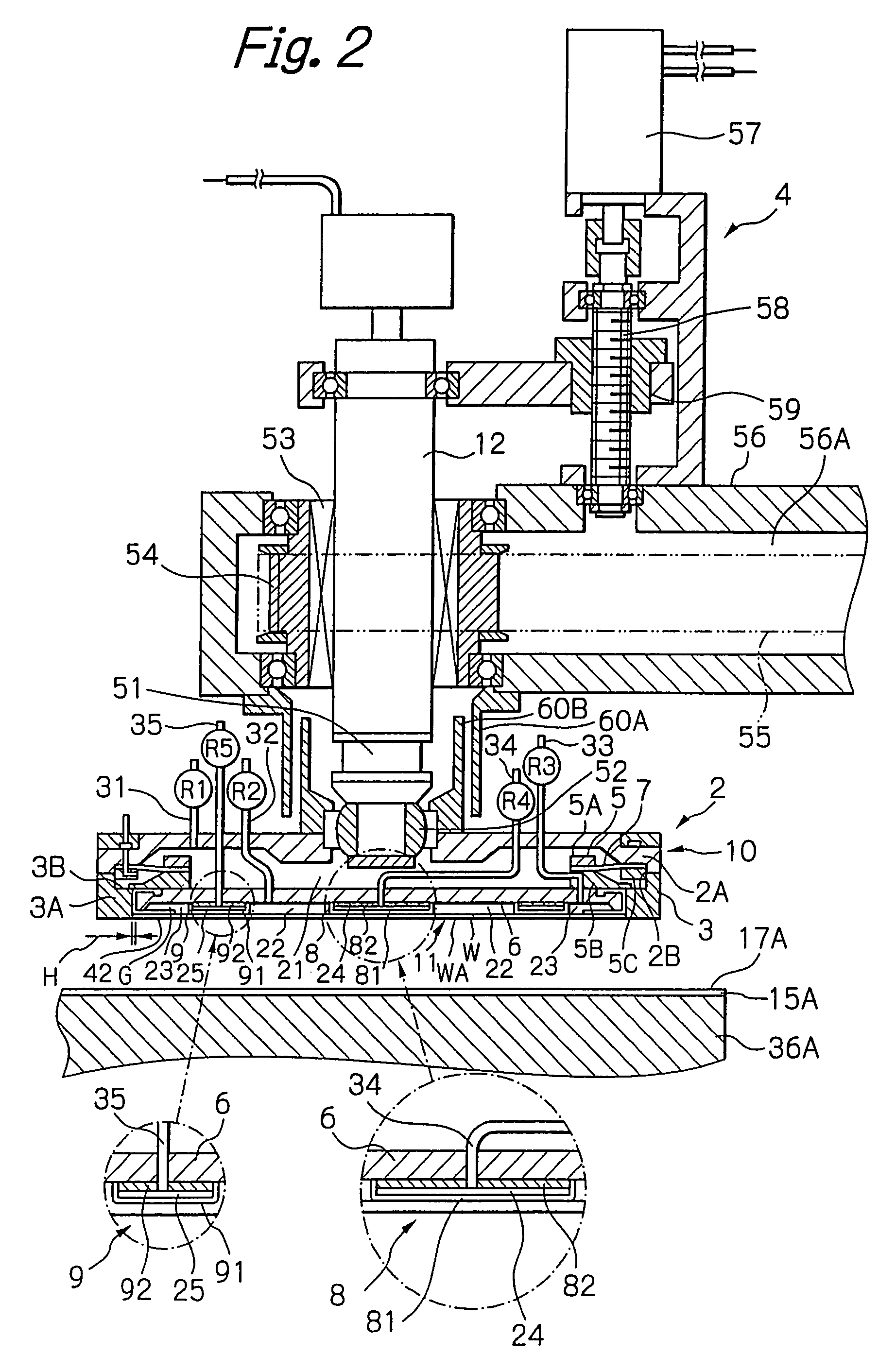Polishing apparatus and polishing method
a technology for polishing apparatus and substrate, which is applied in the direction of grinding machine components, manufacturing tools, lapping machines, etc., can solve the problems of reducing the polishing speed, degrading productivity, and the conventional polishing apparatus is poorly suited for high-speed polishing, so as to improve the finish precision of the polished workpiece, improve productivity, and increase the polishing speed
- Summary
- Abstract
- Description
- Claims
- Application Information
AI Technical Summary
Benefits of technology
Problems solved by technology
Method used
Image
Examples
Embodiment Construction
[0024]The best mode for implementing the present invention is described below, with reference to the drawings. For the purposes of this description, when the same item or an equivalent item appears in more than one figure, it is assigned the same number in all drawings in which it appears, and the description of that item is not repeated.
[0025]FIG. 1 shows an exterior view of a polishing apparatus 1 in this embodiment of the present invention. The configuration of this polishing apparatus will now be described, with reference to FIG. 1.
[0026]The polishing apparatus 1 comprises a substrate carrier 10 for holding a substrate S, a carrier drive shaft 12 for driving the substrate carrier 10 in rotation, a carrier head 13 that supports the carrier drive shaft 12 and a pivotal shaft 14. The pivotal shaft 14 pivots with its own axis as the center of motion, thereby causing a similar pivoting of the carrier head 13 and substrate carrier 10.
[0027]The polishing apparatus 1 also comprises a po...
PUM
 Login to View More
Login to View More Abstract
Description
Claims
Application Information
 Login to View More
Login to View More - R&D
- Intellectual Property
- Life Sciences
- Materials
- Tech Scout
- Unparalleled Data Quality
- Higher Quality Content
- 60% Fewer Hallucinations
Browse by: Latest US Patents, China's latest patents, Technical Efficacy Thesaurus, Application Domain, Technology Topic, Popular Technical Reports.
© 2025 PatSnap. All rights reserved.Legal|Privacy policy|Modern Slavery Act Transparency Statement|Sitemap|About US| Contact US: help@patsnap.com



